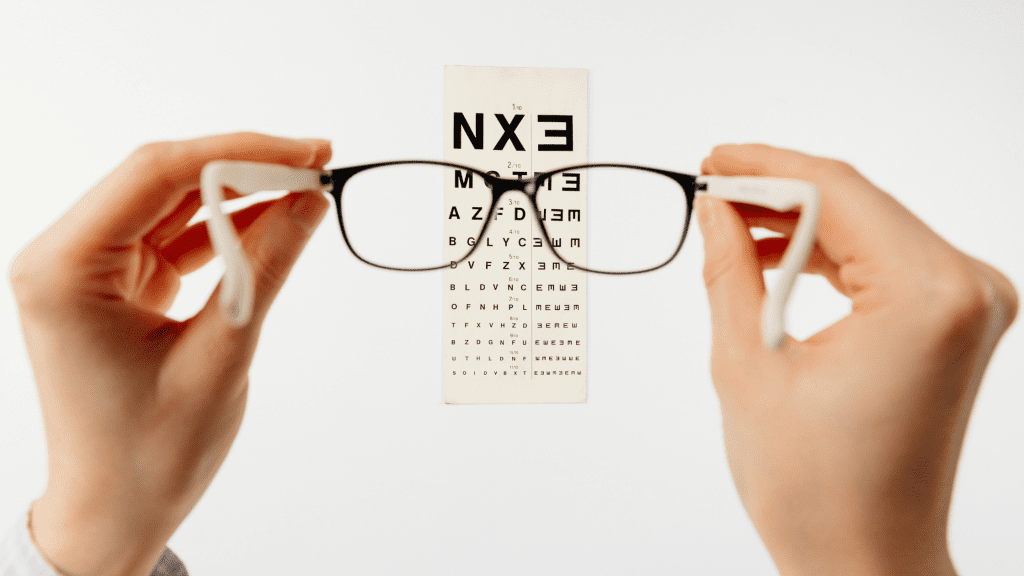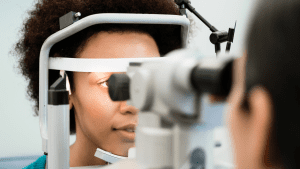Why Do I Still Have to Read an Eye Chart?

Modern technology has drastically changed the way we use our eyesight. We once focused on objects far away to hunt and survey our surroundings for danger. Now, we mainly focus on objects within arm’s reach, namely computers and smartphones. Technology improves our lives by making the difficult easy. Likewise, treating and diagnosing vision problems is much easier than a century ago thanks to technology. Yet, one aspect of eye health has not needed improvement over the years: reading the eye chart. It has been and will continue to be a staple in the medical community. Before we talk about why eye charts are still used, let’s examine the eye chart’s history.
What is an eye chart?
An eye testing chart, also referred to as an optotype, is a chart used to measure visual acuity. Visual acuity is how sharp your vision is at a distance and how precisely you view tiny details. Your eye doctor will have you stand at a set distance from the chart, typically 20 feet, and identify the printed symbols.
The Snellen Eye Chart was invented and named by ophthalmologist Herman Snellen in 1862. It is still the most commonly used chart and has 11 lines where ten letters grow increasingly smaller as you move towards the bottom. It’s pretty simple, but there is science behind the creation of the test.
The next time you take an eye test, pay close attention to the eye chart once you are done. You will notice that it does not contain every letter of the alphabet. The only capital letters used are C, D, E, F, L, N, O, P, T, and Z. The reason is that your brain is clever and can identify most other letters easily, even when your vision is too blurred to see them clearly. The letters used on this chart can help more accurately determine a patient’s level of vision.
There are other eye charts including the Tumbling E chart. That chart is designed for kids who are not yet school age and those who cannot read. This test has only the letter E, and the patient has to identify whether the letter is pointing up, down, left, or right.
Modern Vision Tests
Even though the Snellen Eye Chart is still used in most medical offices there are more sophisticated manners of testing eyesight. Advanced methods include:
- Autorefractor – measures how light is affected as it reflects through the eye
- Photoscreener – uses a camera to take images of undilated eyes
- Digital eye exam – tests your eyesight by displaying symbols on your computer screen while you choose the correct symbols on your smartphone
So, why is the eye chart still used?
Sometimes, the most basic method is simply the best method. If the machines fail, the WiFi is wonky, or someone is afraid to place their head against an autorefractor, then guess what will be used? That’s correct. The trusty eye chart that still hangs on the optometrist’s wall.
An eye chart presents basic information that helps your eye doctor determine what issue you are having with your vision. It can also help determine how your eyes are responding to treatments. Basically, it is a critical component of a comprehensive eye examination.
If you are experiencing changes in visions or need your yearly eye examination, please contact The Eye Center, with locations in Huntsville and Madison, at 256-705-3937. We look forward to seeing you.
